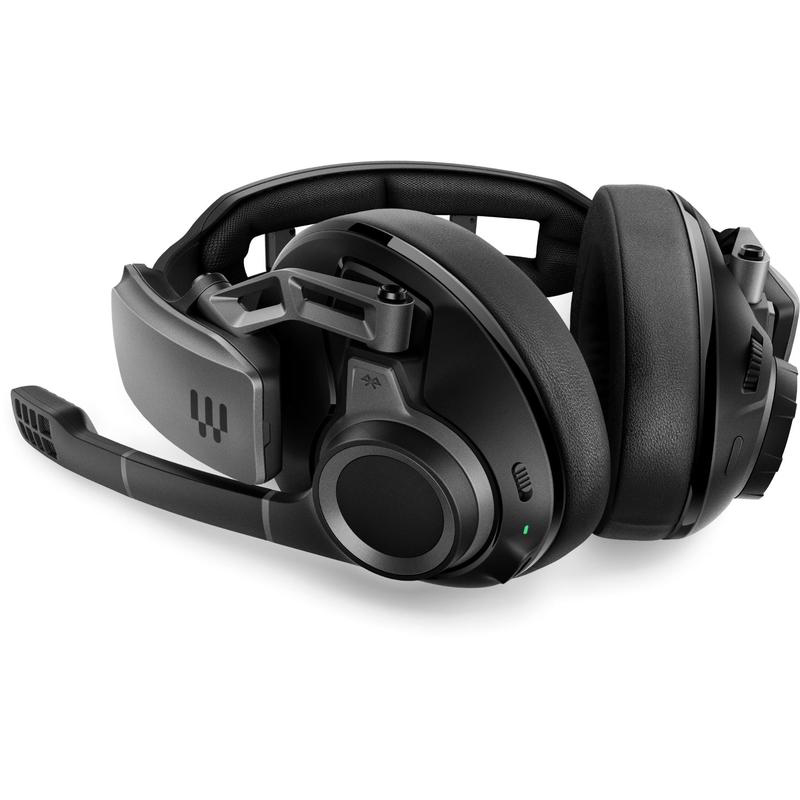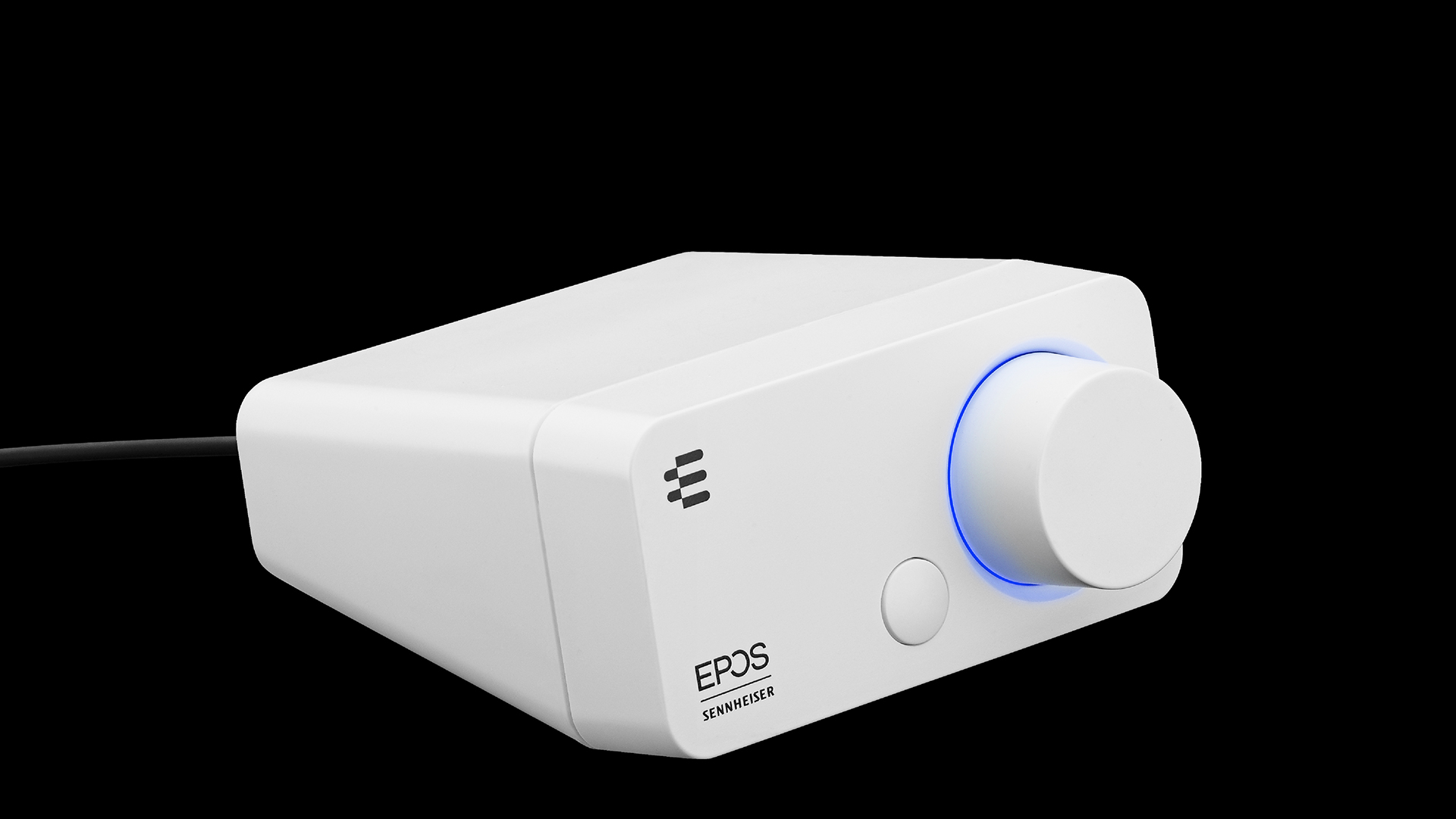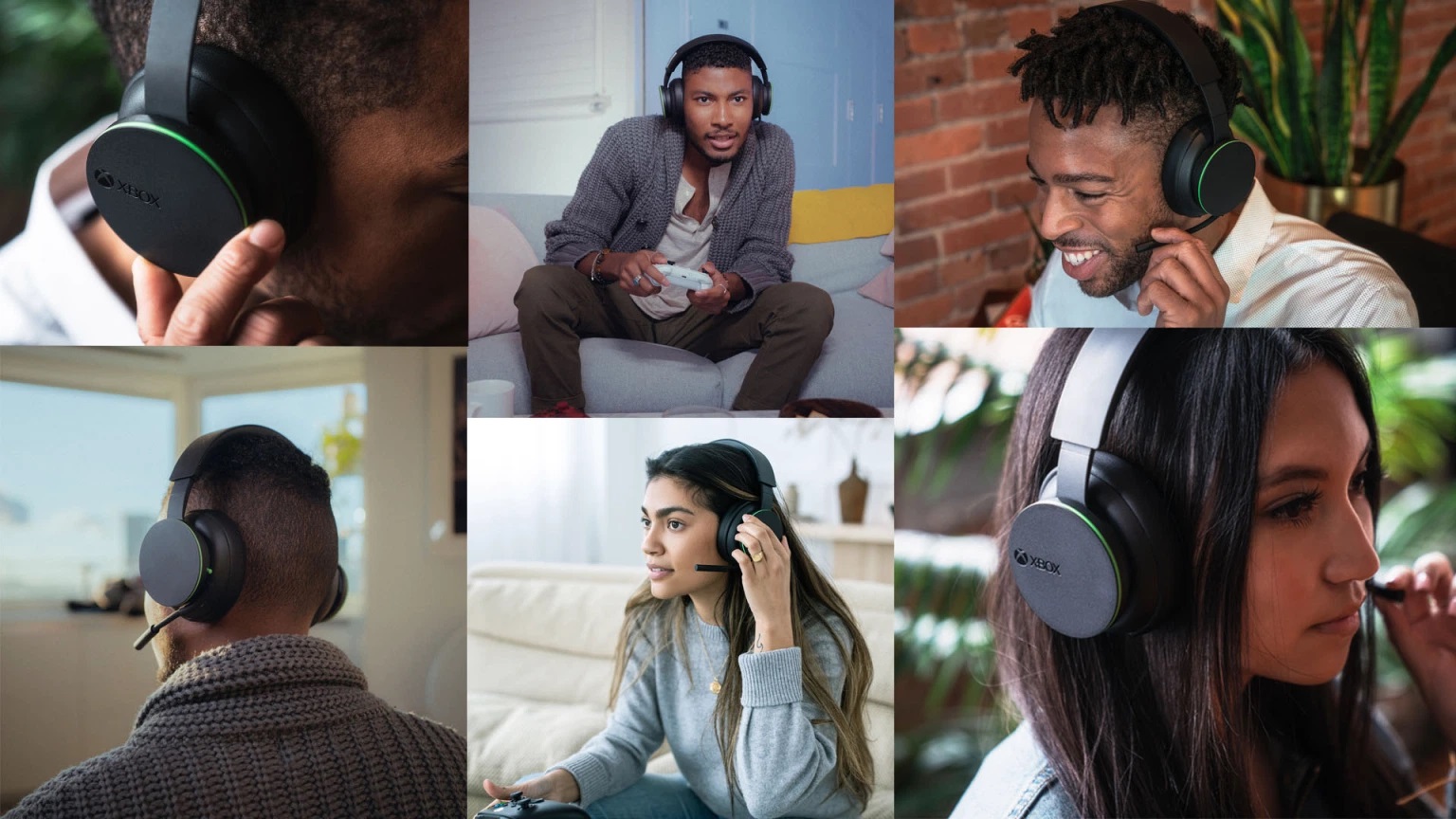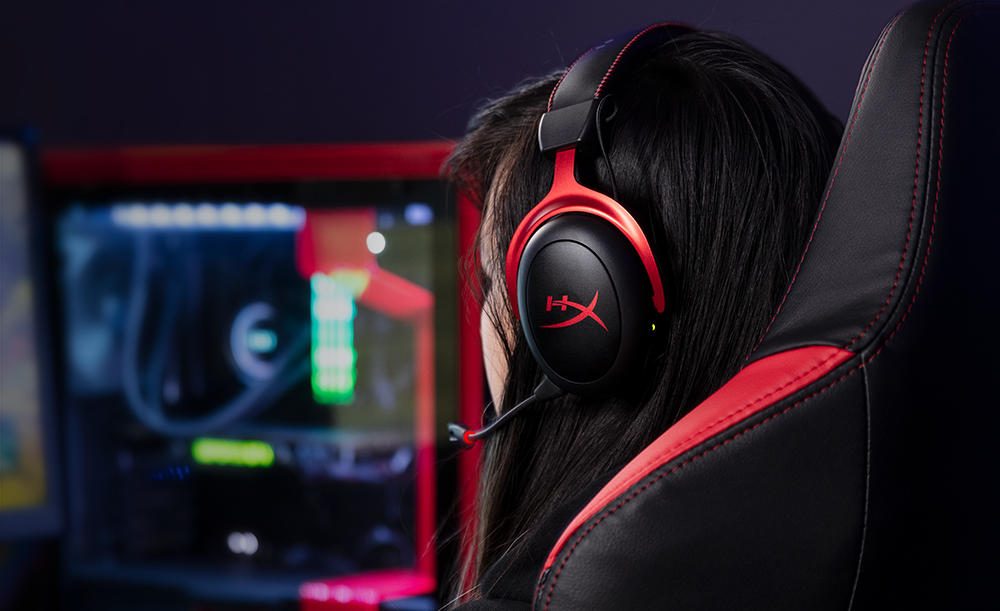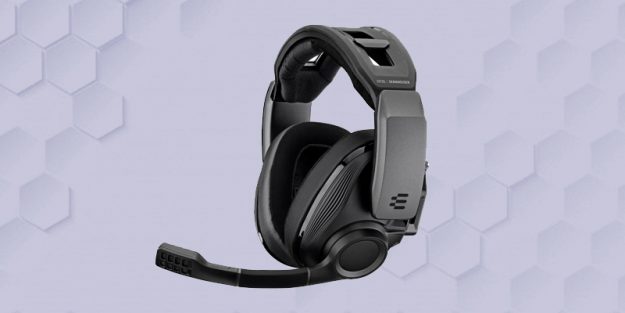
EPOS has been making strides in the gaming space, with their recent GSP 370 Wireless Headset providing impressive battery life, but it’s the EPOS|Sennheiser GSP 670 Wireless Headset that’s truly targeting the high end. At a whopping AU$469 RRP, it promises to provide a top-tier ‘no-compromise’ audio experience, with high-fidelity wireless transmission and customization using its gaming suite on PC. Impressively, it delivers a very solid performance that may justify that pricetag, for the discerning (and wealthy) user.
The GSP 670 communicates either via ‘low-latency’ wireless connection with its included dongle on PS4 and PC, or via Bluetooth on devices which support it (such as smartphones), and both options show no lag in performance. You can connect the headset to two devices at one time as well – so, for instance, have audio streaming from your PS4 which pauses when you receive a call from your phone, which you can then take in your headset. It’s a cool feature, and works fairly well, although it can get confused if you’ve got notification noises and music coming from two separate devices at the same time.
Where the GSP 670 really shines is in its audio quality. On both PS4 and PC, it excels at providing a solid, encompassing and impressive sound stage that sounds accurate but also powerful. Gunshots sound real and impacts from melee weapons hit with a real thud, the headset really excels with material with a lot of bass, like the recent Doom Eternal or some of the more atmospheric scenes in The Last of Us Part II. It also makes it excellent for music as a whole, especially anything with a strong beat, in my experiments in a range of music from Zayde Wolf to TheFatRat.
When connecting to a PC, you can use the EPOS Gaming Suite software to fine-tune the equaliser, as well as turn on virtual 7.1 surround sound. The program looks and feels basic, but it works relatively well – although it took a couple of attempts at updating to actually get my EPOS software to properly change any settings. The virtual surround adds more roominess and echo to the audio, and is effective, but doesn’t match the clarity and punch of listening to the standard 2.0 audio – although the Esports (Treble), Movie and Music presets are all well tuned. The fit is also pretty solid around your ears, meaning there’s not much sound leakage. Overall, it’s a very solid and near-faultless audio experience.
The microphone is fairly average, and actually sounded a little grating a few times when using it on PC. It’s suitable for chat in gaming, but for streamers I would still recommend a good quality USB separate microphone at the very least.
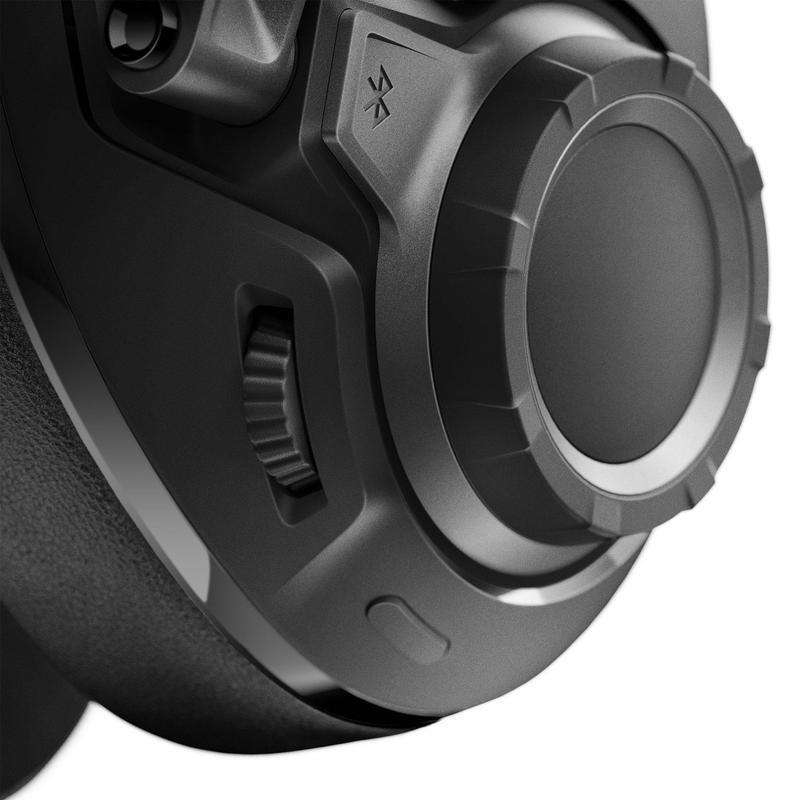 As far as the design goes, the GSP 670 is pretty comfortable to wear, with large padded ear cups with faux-leather edges, as well as a padded headband, and tension adjusters along the top of the headset that do actually make quite a bit of difference, if you’re finding it fitting a little too tightly against your ears. It’s mainly made from plastic, but it feels solid and sturdy with an all-black finish, which is obviously a lot more subtle than some of its neon-coloured competitors on the market. Some other aspects are a little quirkier, and take some time getting used to. The microphone is easy enough, sliding up and down from the left earpiece like most headsets, but the volume dial for chat volume is on the right earcup, hidden at the back of the ear, next to a button which changes EQ presets. There’s a slider on the left earcup which you would assume would turn the headset on and off, but is used only to get battery updates or to pair the headset. Turning the headset on and off is done via the large volume dial that takes up most of the right earpiece, although you’re never quite certain if you’ve actually switched it off properly.
As far as the design goes, the GSP 670 is pretty comfortable to wear, with large padded ear cups with faux-leather edges, as well as a padded headband, and tension adjusters along the top of the headset that do actually make quite a bit of difference, if you’re finding it fitting a little too tightly against your ears. It’s mainly made from plastic, but it feels solid and sturdy with an all-black finish, which is obviously a lot more subtle than some of its neon-coloured competitors on the market. Some other aspects are a little quirkier, and take some time getting used to. The microphone is easy enough, sliding up and down from the left earpiece like most headsets, but the volume dial for chat volume is on the right earcup, hidden at the back of the ear, next to a button which changes EQ presets. There’s a slider on the left earcup which you would assume would turn the headset on and off, but is used only to get battery updates or to pair the headset. Turning the headset on and off is done via the large volume dial that takes up most of the right earpiece, although you’re never quite certain if you’ve actually switched it off properly.
The wireless dongle has a cool array of LED lighting that makes it easy to understand your connection status, and it has a cool low-profile design, however it is so low profile that it actually makes it difficult to remove from PS4 and PS4 Pro systems. The hefty design of the GSP 670 and non-removable microphone also make it a poor choice to use as your daily driver for listening to music when out and about (if you’re managing to actually get out and about in these times).
EPOS claim about 16 hours of battery life on the GSP 670, and that matches pretty closely to what I found. The headset also sports fast-charging, with up to two hours of battery from a seven-minute charge, in the off chance you need to rush to use it. While not as extreme as the GSP 370, the battery life is certainly never an issue I ran into when using the GSP 670 in normal use across my gaming, music listening and phone use. It’s nice to be able to rely on the headset having charge, even if its been a few days since you plugged it in last.
The EPOS|Sennheiser GSP 670 is a great choice if you’re after consistent, solid and accurate audio for your games, or even just great-sounding audio for any devices you have in the house. At its upper-price range, its competing on the basis of this strength, as well as a couple of novel abilities like being able to listen to your PS4 and take calls at the same time. There are some design niggles that can be tricky to get used to, and the microphone isn’t anything special. But, it’s certainly a headset that delivers spectacular audio performance. Whether it’s at a good value for you is up to you to decide.
-Amazing sound quality for games and music -Comfortable -Great battery life -Compatible with PC, PS4 and smartphones via Bluetooth
-Some weird design quirks -Finicky software on PC -Pricey

